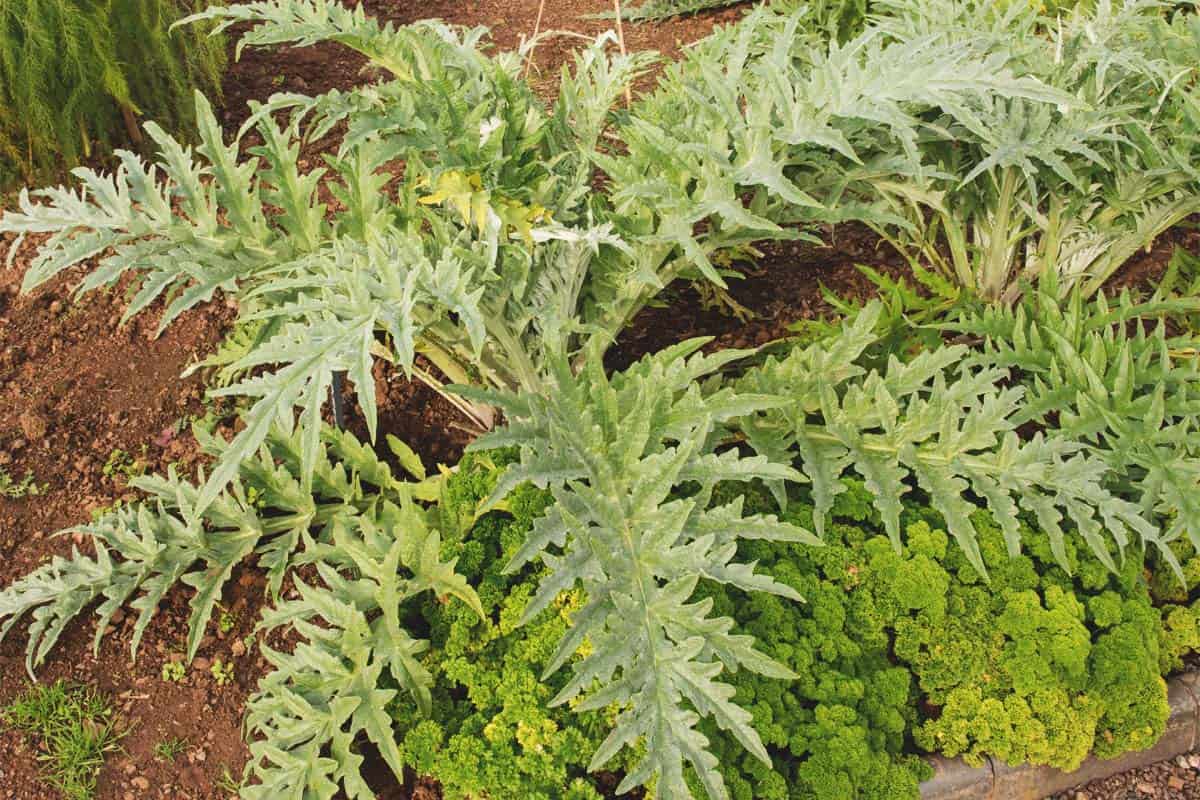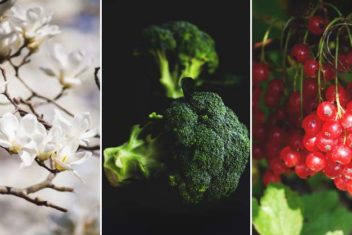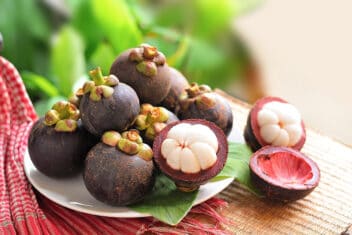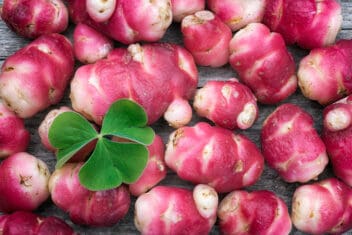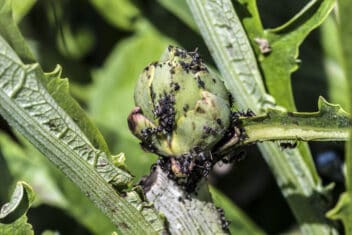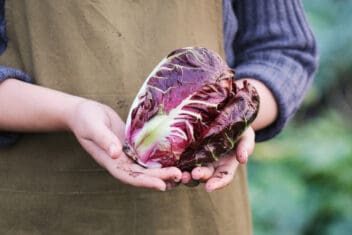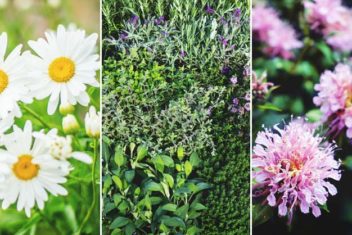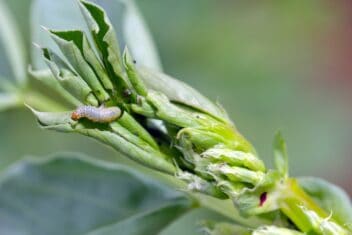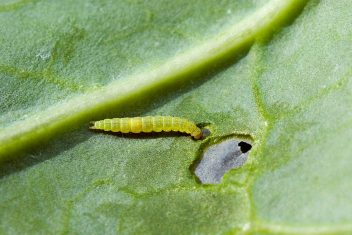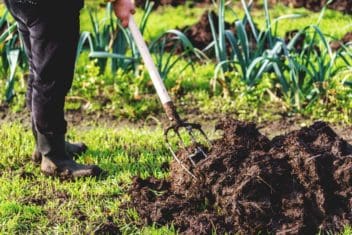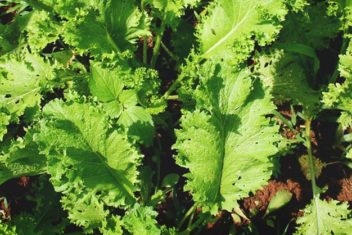I love growing all the farmers market favorite vegetables like beets, lettuce, cabbage, cucumbers, tomatoes, and more. However, as a homesteader I want to keep on homesteading indefinitely, so managing my own health is a top priority. I grow a lot of less conventional healthy crops geared toward my physical health while at the same time making the best use of my homestead landscape.
Now we all know that vegetables are good for you – they contain phytonutrients that help nourish the bodies in ways scientists can’t fully explain. They tend to have fiber and lots of water which are both beneficial to good health. However, I have also found several unique crops that seem to have a superabundance of health-giving properties even if they are grown in less than ideal times or soil conditions.
I am not a doctor and can’t tell you what’s best for your body. But I suspect that some of my favorite health-infusing crops will also be good for you. As a bonus, many of these healthy crops also fill special niche planting times or spaces and can make your garden even more productive year-round.
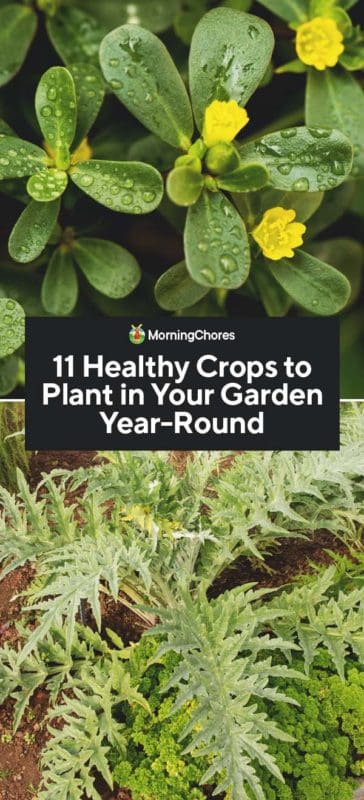
Winter Wonder Healthy Crops
There was a time when about the only thing growing in my winter garden was garlic. Otherwise my beds were protected with mulch or winter cover crops just to keep my soil from degrading in cold weather. Now though, my winter garden is stocked with stuff I can harvest any time the ground is not frozen.
Here are a few of the winter wonders I’ve come to depend on to keep me healthy and strong all winter long.
#1 Root Chicory
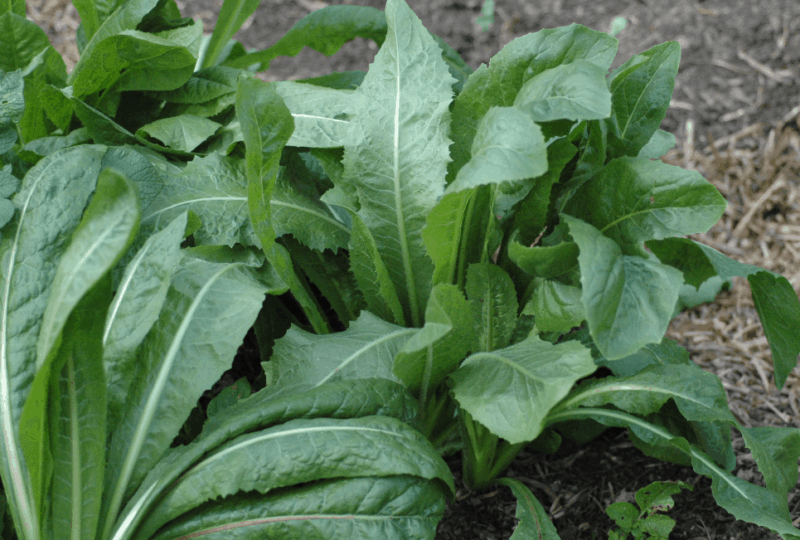
If you’ve heard of New Orleans style coffee, then you might already know root chicory. It’s a taprooted vegetable in the same family as radicchio and endive. Unlike its cool loving cousins, root chicory is quite a bit more tolerant of warm weather.
It can be direct sown in late summer for a late spring harvest. Or it can be started in very early spring, allowed to grow through summer and into winter. The key to success is simply to give it a good start in cool weather and harvest in cool conditions as well.
– Leaves and Roots
The leaves, which have lovely bitter notes can be braised and roasted to sweeten them up. They can also be chopped fine and added to fresh salads for more complex flavor. The roots can be harvest any time the soil is workable.
The roots can be chopped into pieces then slow-roasted until golden brown. Grind them up into a fine powder. This powder can be used just like coffee to create a flavorful drink similar to coffee.
– Multiple Health Benefits
According to WebMD,
Chicory is used for high blood pressure, heart failure, loss of appetite, upset stomach, constipation, liver and gallbladder disorders, cancer, and rapid heartbeat.
Personally, I use it as a liver tonic. I am not a particular fan of the flavor. So, instead, I make an intense infusion and take a teaspoon to a tablespoon full whenever I feel my liver needs a boost.
– Easy to Grow
The really great thing about root chicory, though, is that it can even grow in poor soil. You’ll get much bigger and easier to harvest roots in good soil.
But if you don’t have the bed space, then treat chicory like a weed. Plant it in bare soil before a good rain and let it do its thing. For full details, read our post on Growing Chicory.
#2 Salsify
I first ate salsify in France in the middle of winter. It tasted remarkably like oysters and parsnips. Just a bit of butter, cream, and garlic turned an easy-to-grow root vegetable into a meat-like meal.
Of course, I had to try my own. Unfortunately, the first time I did, I lost my entire crop to rabbits. They ate the greens the second they emerged from the ground. They preferred salsify over every other green I was growing.
In my experience as a gardener, rabbits have the best taste in greens. Since those were a clear favorite, I was sure they had to be good. So, the next time I grew it, I protected it from rabbits and grew a few extra for the greens.
– Grow it for the Greens
The rabbits were right! Those tender young greens are so buttery and tasty. The really nice thing about salsify is that the greens grow any time the weather warms up a bit. So, in early February the greens pop up at the first hint of spring’s arrival.
– Perennial Patch
Plant your salsify as a perennial in a dedicated patch of well-prepared soil. Make sure your compost is well-aged and worked into the soil rather than piled on top. Otherwise roots will stunt in the first few inches of soil and the plant will die from lack of moisture.
Allow the plant to establish for a few months. Water regularly during this time. Then, cut back the greens and let them re-grow. Harvest the new growth when the leaves are young and tender. Harvest a few times, then stop and let the plant grow for a while so the roots can store nutrients.
As long as you occasionally let the root store up some nutrients, you can keep it going for several years as a come-and-cut green. These are tasty in salads or sautéed.
– Roots Rock Too!
Do also grow some as an annual for roots, though. They are truly delicious and loaded with iron, potassium, calcium, manganese, phosphorus, magnesium, and copper, as well as vitamins including ascorbic acid, pantothenic acid, thiamine, riboflavin, folate, and vitamin B6 (according to Organic Facts).
These also have gorgeous flowers and will self-seed if you let them! Eager to give them a try? Then read our detailed post on Growing Salsify.
#3 Wintercress (Barbarea verna)
I love watercress. But I find it a bit finicky to grow. In our hot southern climate, it’s just too much trouble for such small yields.
Wintercress, on the other hand, grows like a weed. I just scatter seeds in late fall, apply a bit of leaf or straw mulch to protect the soil, and let nature take its course. Germination rates vary wildly which is a plus. It’s basically like this plant succession sows itself.
When the plant gets a few inches tall, I just harvest the whole thing. I eat it fresh or cooked. This delicious green is also called bittercress and upland cress by seed sellers. Despite the name, there is nothing bitter about it when grown in cold weather.
This plant will easily self-seed if allowed to flower. But, since it’s delicious, if it gets out of hand, just eat it! Plus, it only germinates in cool weather, and mostly in late winter or early spring, so it doesn’t tend to compete with warm-season crops.
Perennial Possibilities for Healthy Crops
Besides all the annual vegetable gardening I do, every year I add several perennial healthy crops to my line up. Perennial crops need a little time to get going. But once they feel at home, they take a lot less work than your labor-intensive annual vegetables.
I like to plant my perennials all over my landscape so that I get the fun of foraging right in my yard. Many perennial edibles are actually quite beautiful too and work well in an edible landscape.
Here are two of my favorites.
#4 Cardoon
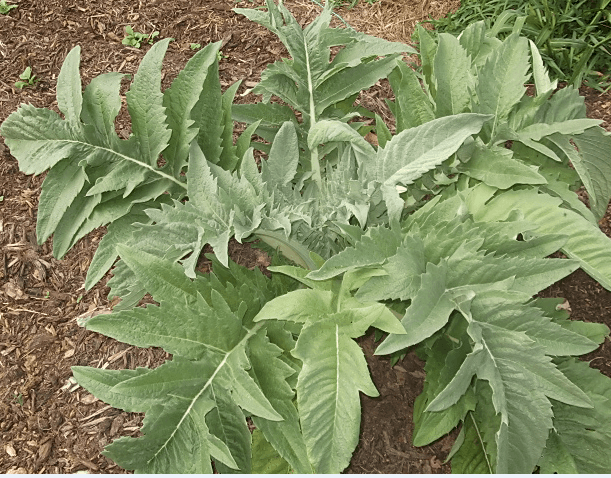
Cardoon is another vegetable I first ate in France. It was baked with shallots and cream. The cardoon casserole was topped with bone marrow and bacon.
Although bone marrow might seem a bit bizarre to an American eating audience, it’s quite a delicacy in other countries. So, the fact that it topped the cardoon tells you this was a special dish.
– Annual or Perennial
Cardoon is quite easy to grow as an annual. It can grow 3-5 feet tall and wide by mid-summer if started indoors in March. But if you live in USDA zones 7 or above, it can be kept as a perennial.
It’s stunningly beautiful as a landscape plant. However, if you want to eat the leaves, you’ll need to eat them while they are on the small side. You also need to blanch them.
– Blanching Basics
To blanch means to make white. You do this by robbing the leaves of sunlight so they can’t photosynthesize. This process makes the plant more tender and adds sweetness to the bitter flavor profile.
A few weeks before you want to harvest your cardoon, wrap the plant in paper or cardboard so the leaves can’t collect sunlight. Then, when they lighten in color, harvest the leaves you need. Keep a few leaves on the plant to initiate the growing process again.
Remove the leaf portions and use the stalks to cook. You can also use unblanched leaves for pickling. They keep everything much crispier than your standard oak or grape leaf. They look pretty in a jar as well.
In terms of health benefits, cardoon has lots of potassium, iron, magnesium, B5 and B9. But, for me, the biggie is its intestinal benefits. Cardoon is one of those veggies believed to help you increase beneficial intestinal flora to aid in digestion and improve overall health.
#5 Ashitaba
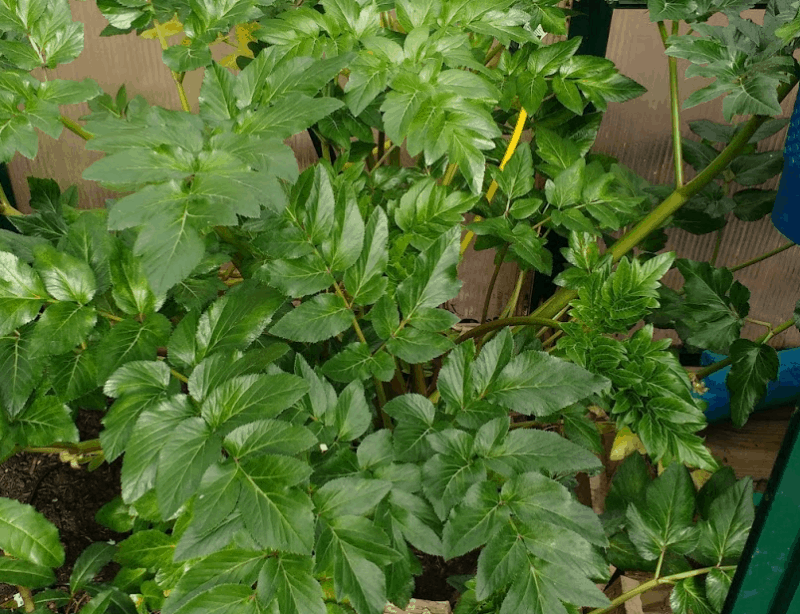
Are you looking for an alternative crop that might make you live longer? Well, then Ashitaba might be your perfect perennial. Scientific research has shown that compounds in this Japanese natural medicine might actually do just that.
The region where this leafy green likely hales from, Hachijojima, an island in the Izu archipelago in Japan, is known as the “longevity island”. Inhabitants live extremely long and healthy lives. Although lots of factors are probably at play, the regular consumption of Ashitaba is considered a key contributor in their longer lives. (Plus samurais swear by it… really look it up.)
Ashitaba likes cool, but not cold climates. So, I had a hard time growing it outdoors in my hot southern climate. Instead, I grow it in the ground in my greenhouse. There, it comes up every year in October and grows like a champ until April. Then it dies back.
During its growing season, we regularly harvest and dry the leaves to make powder. You can also use young leaves added into salads or as a celery substitute.
This plant can get really big. So, you only need one and can control the size with regular harvesting. It will need watering and occasional compost additions to keep it lush, green, and loaded with longevity enhancing compounds.
Shallow Soil Stunners
If you have a new garden, it can take a while to develop deep loamy soil. But that shouldn’t stop you from growing a host of delicious shallow-rooted healthy crops.
#6 Oxheart Carrots
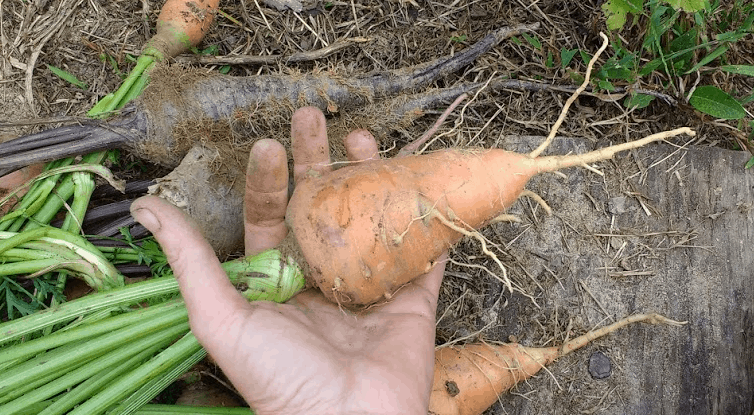
We’re all used to the long straight carrots you get from the grocery store. Those are lovely and healthy, but hard to grow if you don’t have at least foot deep soil. In shallow soil, they fork and curl, rot, and become susceptible to rust fly.
So, don’t waste your time on long carrots, instead, opt for oxheart carrots. This short, stubby but very fat little chunk carrot grows perfectly well in the top 4-6 inches of soil.
Just make sure to keep them well-watered since they don’t form a deep taproot well below most drought lines as long carrots do. Also, if you happen to grow hydroponically, oxheart carrots have the most beta carotene in test studies.
#7 Wild Arugula
That expensive, fancy, baby arugula you find at the grocery store is a slightly domesticated version of the wild stuff that grows like weeds in shallow, dry Italian soils. The culinary cultivars require deep loamy garden soil for good production and flavor. They also require lots of extra watering during hot weather to keep the leaves from turning too peppery.
Wild arugula, or Sylvetta, by contrast is about as hard to grow as mint even in poor soils. You just need to give it a weed-free place to start, some cool weather, and a little watering at the outset. After that, harvest the leaves until it flowers. After flowering, cut the plant back and it’ll grow again.
Wild arugula is essentially a perennial weed. The leaves are smaller than the cultivars, but so much easier to grow. Although it is easy to grow, we do have a full guide for Growing Arugula.
#8 Baby Bok Choy
Similar to the oxheart carrot, without sufficient soil depth for the nutrient seeking taproot to anchor, many mature vegetables won’t grow well in shallow soil. Bok choy, for example, tends to turn bitter before it ever produces a decent-sized rosette.
The new “baby” versions of bok choy, however, will grow just fine in 6-inch soil beds or pots. Make sure you actually pick varietals with the word “baby” in it, rather than growing full-size bok choy as baby vegetables. Also, make sure your shallow soil is amended with compost for good results.
Read this post for full details on how to grow Bok Choy.
Summer Spinach Substitutes
I love spinach. But I live in the south, so growing more than a bit of it in winter is crazy. Instead, I grow my favorite hot weather spinach substitutes. These also work incredibly well in edible landscapes.
#9 Malabar
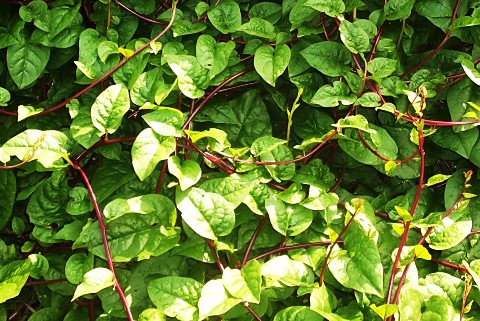
Malabar is a vining green that can grow up to 30 feet long in the warm season. It can easily get invasive in warm climates. But in cold climates, it’s frost killed.
It does self-seed, but seedlings are easily identifiable and slow to root deeply. So, just pick them and eat them as baby greens if you don’t want them to take over.
Train this up over your fences or trellises to take advantage of vertical space. Harvest the leaves when they are about two inches across at the shoulders for best taste and texture.
#10 New Zealand Spinach
This is a perfect ground cover on the south side of an edible landscape. It has a low spreading, bushing habit that makes it wonderful along bed borders. Snip of every 3rd leaf to keep it looking full while also getting a harvest. Or cut the growing tips to promote branching.
#11 Purslane
Purslane is often considered a weed. Yet, when intentionally grown from productive cultivars in good garden soil, it’s a succulent treat. And I do mean that in both senses of the word!
It doesn’t require a lot of water because it holds its own in the leaves. Plus, it tastes succulent fresh or cooked as a spinach substitute.
Just like spinach, these three leafy greens are loaded with vitamins, phytonutrients, and fiber.
To Your Health
None of these healthy crops are likely to replace the standard favorites at our farmers markets. Yet, they offer us options to help fill the health void when our other crops have died from cold or heat, we want more food for less work, or our soil isn’t stout enough for some of the classics.
If you try these plants at home, I know they’ll help you grow a more productive garden while offering you healthy alternatives at home.
